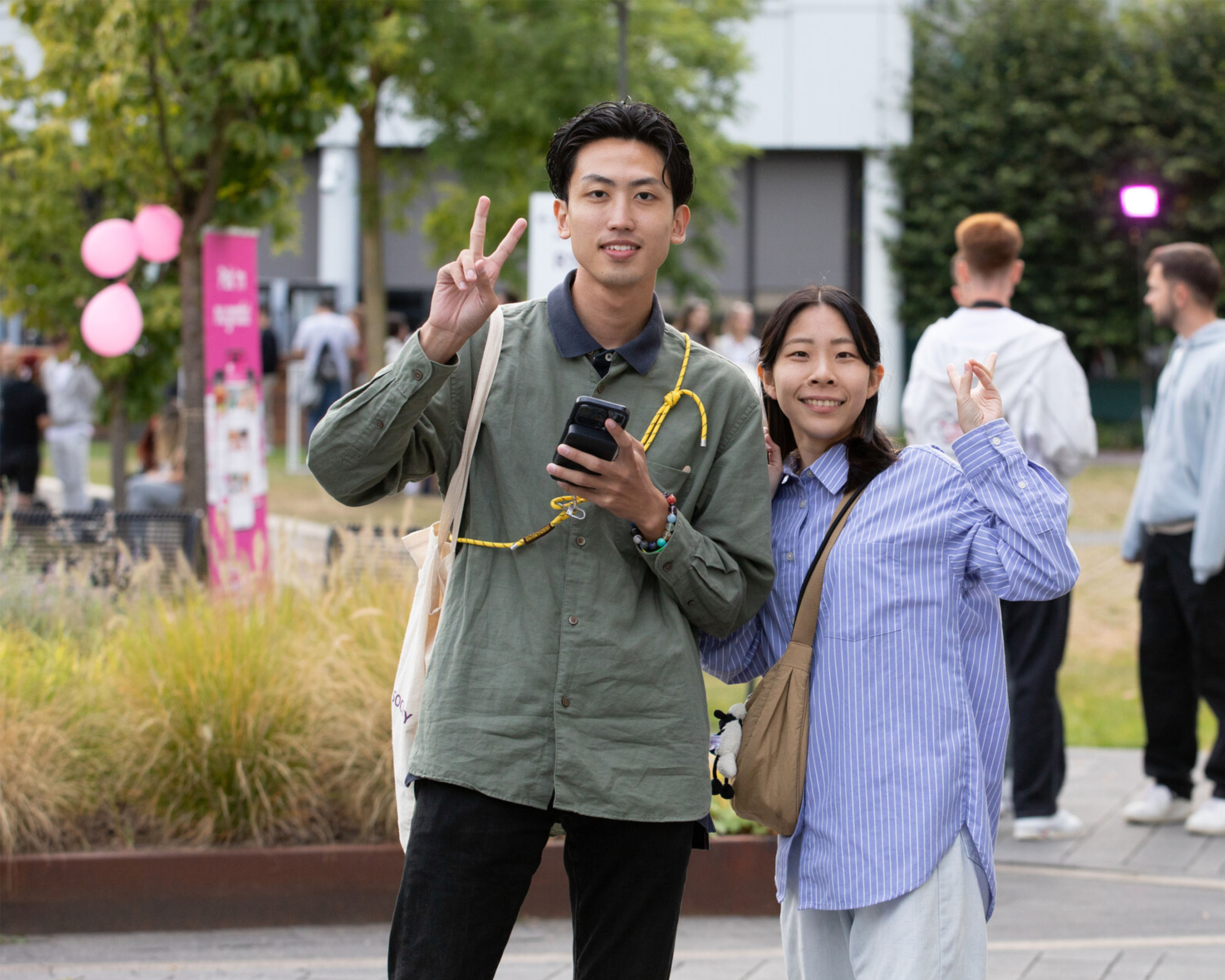
Ensembles Jazz
When playing jazz and improvised music, interaction with fellow musicians is essential, so ensemble playing is a vital part of the curriculum. As a student you will participate in several ensembles to develop your musical skills. To broaden your musical horizon, you can choose from a great variety of ensembles.
Below you’ll find examples of the different ensembles. First and second year students are obliged to participate in a Realbook Ensembles.
Within the Realbook Ensembles there will be an emphasis on the basic fundaments of playing jazz standards, and compositions by jazz legends such as Miles David, Thelonious Monk, Duke Ellington amongst others. The focus will be on improvising over standard jazz harmony, knowledge of repertoire, group interplay, and accompanying. The ensemble's repertoire encompasses a variety of styles within jazz, including swing, bop, blues, and more.
In the Electronic Groove Ensemble you will focus on rhythm and grooves in an electronic context. The merging of jazz with funk, rock, soul, and hiphop are a central part. There will be a focus on dynamic group interplay, rhythmic contexts, improvising over (static) harmonies, and the use of electronic devices. The repertoire that will be played consists of fusion compositions in which jazz elements still play a vital part. Additionally, this ensemble offers collaborative opportunities with students and instructors from the Rock Academy.
This ensemble has a focus on the jazz style that is often being referred to as Scandinavian jazz, Nordic sound, or ECM jazz. Key elements are the use of
space, sound, straight rhythms, and solo idiom that derives from folk and classical music. There will be a special emphasis on group sound, and
composition.
There are two ensembles in which jazz will be merged with influences of South-American music.
Claves, harmonies, and repertoire with Afro-Cuban roots will be explored in the Afro-Cuban Ensemble. You will learn how to relate to the specific characteristics of salsa in a jazz context, and how to improvise using elements of both styles. Claves, harmonies, and repertoire rooted in Afro-Brazilian traditions will be explored in the Brazilian Latin Ensemble. The music goes beyond Samba and Bossa Nova to encompass styles like MPB, Samba-Funk, Baião, and Choro. You will learn to integrate the specific characteristics of samba into jazz, mastering improvisation with elements from both traditions.
All over the world jazz is being merged with regional musical characteristics. This has led to new jazz styles with elements of music from South America, Europe, the Arab world, West-Africa, India, etc. In the Global Rhythm Ensemble you will explore some of these globalized jazz fusions with an emphasis on rhythm, group playing, and improvisation. The repertoire that will be played consists of jazz compositions with elements of folk music from various regions in the world.
One of the most unique concepts in jazz history is the big band. While the school big band focuses primarily on the American swing repertoire, as a member of the orchestra you will also venture into Latin jazz and contemporary music. Emphasizing timing, section playing, phrasing, and dynamics, the ensemble explores the rich repertoire of the American songbook and standard big band arrangements.
In this ensemble you will be working on your own compositions that will be played as a group and will be performed at a concert. There will be a focus on
compositional qualities, musical arrangements, group interplay, band sound, and originality. The repertoire that will be played consists of students originals.
A more free approach of improvisation. Stretching parameters such as melody, harmony, and rhythm within flexible boundaries.
This ensembles has a focus on a more free approach of improvisation. What can you do when you stretch parameters such as melody, harmony, and rhythm. You will be exploring sounds, improvise with more flexible boundaries, and create dynamic tension in group playing. It challenges participants to play more by intuition. The repertoire that will be played derives from free and avant-garde jazz, as well as modern jazz composers.
As opposed to hear swinging, bop-oriented jazz, there have been fusing with classical and chamber music all throughout the history of jazz. In this
ensemble there will be a focus on the blending of jazz with chamber music. There will be an emphasis on sound, phrasing, improvisation, composition,
arrangements, and the use of non-traditional jazz instruments.
Students vocal jazz will develop their ability in close harmony singing. Close Harmony Ensemble focusses on singing in harmony, timing, interaction, and tonal pitch. This ensemble enhances your awareness of harmonic possibilities and voicings, as well as their abilities to sing together, blend, and refine intonation. The repertoire consists of standards and modern compositions.

